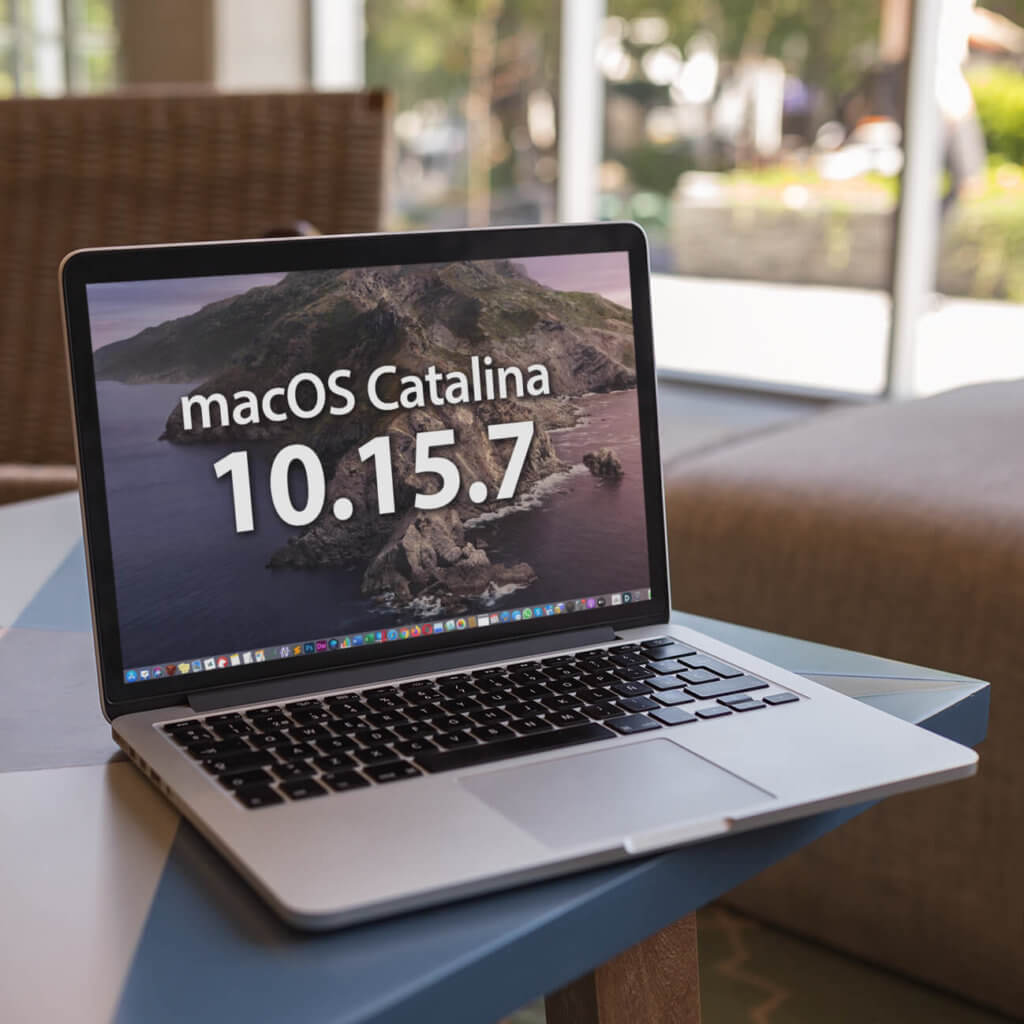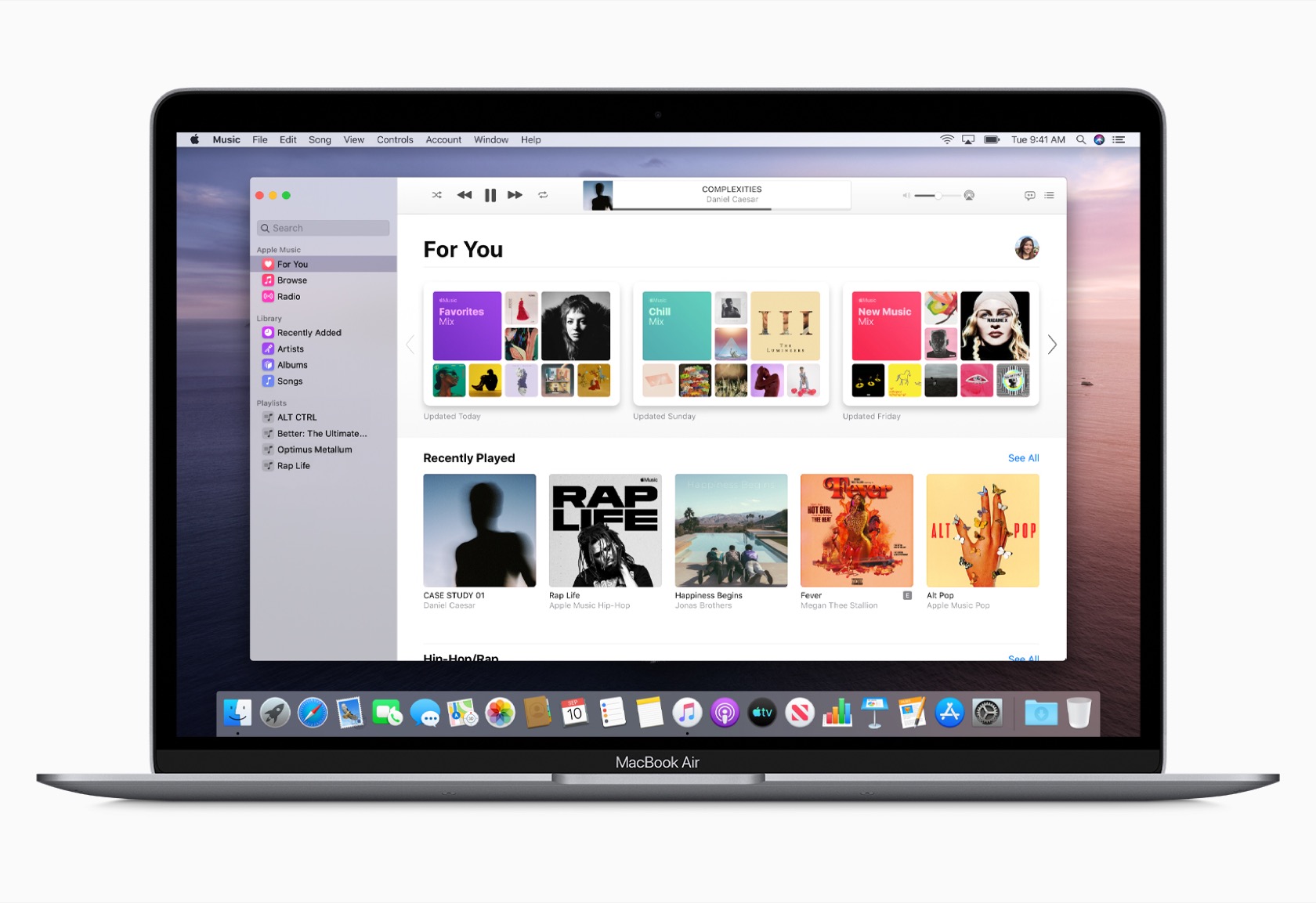
The latest: Apple releases macOS Catalina 10.15.5 update. Apple released an update for macOS Catalina that includes the new Battery Health Managment feature for MacBooks, and a new option to turn. For details about your Mac model, click the Apple icon at the top left of your screen and choose About This Mac. The new MacOS Catalina update is quite excellent, praised by many developers and even the users. There are many reasons for that; first of all the new MacOS Catalina looks quite nice and it is packed with numerous features which are mostly loved by the users.
To automatically install macOS updates, select “Automatically keep my Mac up to date.” To set advanced update options, click Advanced, then do any of the following: To have your Mac check for updates automatically, select “Check for updates.” To have your Mac download updates without asking, select “Download new updates when available.”. Mac OS X 10.5 Leopard: Released in the fall of 2007. Apple highlighted the fact that it added 300 new features to OS X, including a simplified user interface (good!) and a semitransparent menu bar. MacOS Big Sur elevates the most advanced desktop operating system in the world to a new level of power and beauty. Experience Mac to the fullest with a refined new design. Enjoy the biggest Safari update ever. Discover new features for Maps and Messages. And get even more transparency around your privacy. MacOS Catalina (version 10.15) is the sixteenth major release of macOS, Apple Inc.' S desktop operating system for Macintosh computers. It is the successor to macOS Mojave and was announced at WWDC 2019 on June 3, 2019 and released to the public on October 7, 2019. The macOS Catalina 10.15.2 update improves the stability, reliability and performance of your Mac and is recommended for all users. This update adds the following features: Apple News.
Make your Mac invincible
Recently switched to macOS 11 Big Sur? This means you’re in for some huge enhancements and a completely redesigned look. It's fair to say Big Sur is not a perfect fit for everyone, though. Can you go back to previous macOS if that's the case? Sure. In this article, we describe how to downgrade from macOS 11 and continue using your previous macOS without any data loss.
Toolkit for safe macOS downgrade
Easily switch between macOS versions with Setapp. Get access to the apps that will keep your Mac invincible and your data protected.
Before you make a decision to uninstall Big Sur, check out some common macOS 11 problems and fixes. Maybe, the problem that is hampering your flow is on the list — and you can easily solve it. Also, if your Mac runs macOS Big Sur beta, you should know the public version available starting November 12 fixes most of the problems.
If you go like 'All right, thanks, just tell me how do I uninstall Big Sur from my Mac' — fair enough. The good news is it's easy to roll back macOS update. Follow the guide below.
How to downgrade from Big Sur step by step
Just to clarify the process a little bit, a downgrade from Big Sur covers five important steps — from backing up all the files you've acquired since upgrading, to restoring those on macOS Catalina. There are a few tools you'll need to use to downgrade safely: Primarily, a backup utility (Apple's native Time Machine or a more advanced third-party app like Get Backup Pro) and CleanMyMac X for keeping things tidy. Now when you're all set, let's get into it.
Mac Os Catalina Next Update Today
Best backup app for Mac
Before you roll back to the old macOS, create a secure backup of all your data with Get Backup Pro. So that there’s nothing to lose.
1. Backup your data (pretty please)
Even if you've just recently upgraded and haven’t managed to accumulate lots of data on macOS Big Sur, don’t skip this step. Downgrading means you erase everything from your hard drive. So whatever you’ve been working on since installing macOS 11 will be gone. Make sure you avoid the trouble and create a quick backup. You can do this with Time Machine, but we recommend Get Backup Pro for creating a bootable backup. This will give you an exact copy of your drive, with all saved settings — so that you can pick up where you left off.
Here’s how to back up data before you uninstall Big Sur:
Open Get Backup Pro from Setapp
Hit the plus button at the bottom to create a new backup
Name your backup project
Pick a backup destination and customize settings if necessary
Choose files, folders, and apps data you want to add to the backup
Hit Start.
It’s a good idea to use CleanMyMac X for a system cleanup before you create a backup. This way, you’ll avoid backing up unneeded files and duplicates, and therefore run a smooth and quick backup process. Plus, the app is generally a good tool to keep at your fingertips to remove any clutter. Believe me, your Mac has a lot of it. Here’s how CleanMyMac X works:
Open the app and hit Scan
Wait for CleanMyMac X to finish the scanning process
Hit Run if you want to remove all the junk, or Review if you want to select the files that should be deleted manually
That’s it! You’re all set for a clean backup.
2. Install macOS Catalina on a bootable drive
It might seem a bit counterintuitive, but you have to install macOS Catalina on an external drive before you erase Big Sur. This requires some Terminal work, which we’ll guide you through in a minute. Before that, make sure your Mac can boot from external media.
Allow booting from external media on new Macs
If you own a MacBook Air, MacBook Pro, or Mac mini with the T2 security chip (2018 models and newer), you might experience problems with booting files. To avoid this, you should allow booting from external media before you run downgrade to Catalina:
Restart your computer and boot in Recovery Mode (hold down Command + R once the Apple logo appears)
Access Utilities > Startup Security Utility
Enter your firmware password (note that this is the password you used to enable Startup Security Utility and it’s different from your admin and Apple ID credentials)
In External Boot, check the box next to “Allow booting from external media.”
Once you’re all set, it’s time to get Catalina back. First, download macOS Catalina from the Mac App Store, the usual way. While installers of the latest macOS versions are available only before the official release of the new one, you should do this as early as possible.

Then, install macOS Catalina on an external drive. Start with formatting the drive (you can skip this step if you have a formatted drive):
Get an external drive with minimum 12GB of free space
Connect it to your Mac via USB
Open Finder > Applications
Navigate to Utilities > Disk Utility
Click Erase next to your drive (make sure you name it if you have more than one)
Select APFS or macOS Extended format > Erase.
Latest Mac Catalina Update
Install macOS Catalina on a formatted drive:
Open Finder > Applications
Launch Terminal from Utilities
Type the following command
sudo /Applications/Install macOS Catalina.app/Contents/Resources/createinstallmedia--volume /Volumes/MyVolume
Note that “MyVolume” in the command above is the name of your drive, so you should change it accordingly.
Click Enter/Return
Confirm your action by entering the admin password > Y
Click Return
Once Terminal says “Done,” you can quit it and eject the hard drive.
3. Remove macOS 11 from hard drive
Now is the time for goodbye. Here’s how to downgrade from Big Sur to Catalina by removing macOS 11 from your hard drive:
Click on the Apple logo and select Restart from the menu
Hold down Command + R to reboot in Recovery mode
Open Disk Utility > Continue
Select your Startup Disk > Erase
Select APFS or macOS Extended format and confirm your action.
4. Reinstall macOS Catalina on your Mac
Mac Os Catalina Update Apple Id Settings
Next thing, run a downgrade to Catalina by reinstalling it on Mac:
Make sure your Mac is connected to the internet
Connect your bootable external drive
Click on the Apple logo and select Restart from the menu
While your Mac restarts, hold down Option
Once the list of startup disk options appears, select the bootable drive with macOS Catalina installer
Hit Continue, agree to the licensing terms, and wait for macOS Catalina to reinstall.
5. Restore data from backup
The last step is to bring back all the data you’ve compiled since upgrading to Big Sur. Again, a backup is essential since it will help restore both your files and saved settings. You can restore everything with the same tool you’ve used previously to create a backup.
Here’s how to restore a Time Machine backup:
With your Mac connected to the internet, restart the system
Hold down Command + R to enter Recovery
Access Utilities > Restore from Time Machine Backup > Continue
Select the backup source > Continue
Select your backup > Continue
After Time Machine restores data from the backup, your Mac will reboot.
If you used Get Backup Pro for your backup, restoring data is even easier. All you have to do is launch the app, select your backup from the list, and hit Restore. Select a custom location for your files and once again click on the Restore button. That’s it. All your data and settings will be back on macOS Catalina in a minute.
That’s about it. Whenever you’re wondering how to go back to previous macOS, you can use the guide described above. All the instructions are pretty universal, except you should adjust the Terminal command when installing old macOS on a bootable drive.
In case your Mac is slowing down or else behaving strangely after the downgrade, we recommend to get iStat Menus for advanced system performance monitoring. This app will help you understand the source of the problem — whether it’s login items, network problems, or disk activity — and fix them accordingly.
iStat Menus is available on Setapp, along with the useful utilities like CleanMyMac X and Get Backup Pro. So you can use it all from one place for 7 days free. Hopefully, this toolkit will help you with how to downgrade macOS Big Sur, as well as keep your Mac in perfect shape, anytime.
Meantime, prepare for all the awesome things you can do with Setapp.
Read onSign Up
Mac Os Catalina Next Update Pc
Along with Monday's batch of operating system updates, Apple issued a new version of its Safari web browser for past Mac software releases macOS Catalina and macOS Mojave.
Mac Os Catalina Latest Update
Apple is currently pushing out the latest Safari iteration to users of macOS Catalina and macOS Mojave, though the company failed to detail the update's contents in accompanying release notes.
Safari 14.1.2 is listed on an Apple security update support document, however, suggesting the new version contains important bug fixes and security enhancements that typically accompany operating system point releases.
Apple on Monday issued iOS 14.7, tvOS 14.7 and watchOS 7.6 to the public on Monday following weeks of beta testing.
Along with new features, like MagSafe Battery Pack support and Apple Card Family upgrades on iOS, the latest round of updates include a number of bug fixes and security patches. Apple has yet to publish details on the security enhancements, but is expected to do so later today.
All new operating system versions are currently being pushed through Apple's software update delivery system, while Safari 14.1.2 can be downloaded by navigating to Software Update in System Preferences.
AppleInsider has affiliate partnerships and may earn commission on products purchased through affiliate links. These partnerships do not influence our editorial content.